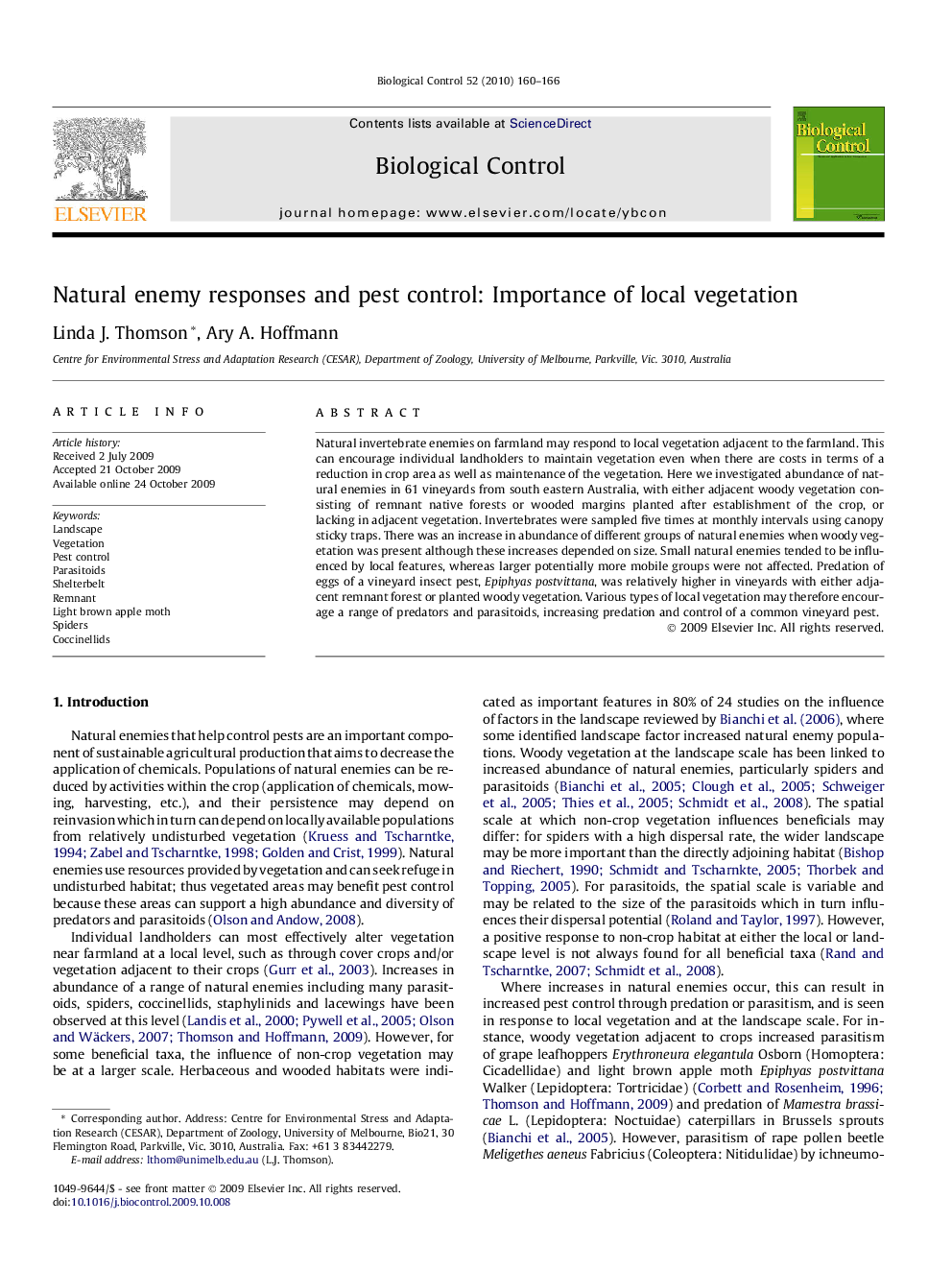| Article ID | Journal | Published Year | Pages | File Type |
|---|---|---|---|---|
| 4504443 | Biological Control | 2010 | 7 Pages |
Natural invertebrate enemies on farmland may respond to local vegetation adjacent to the farmland. This can encourage individual landholders to maintain vegetation even when there are costs in terms of a reduction in crop area as well as maintenance of the vegetation. Here we investigated abundance of natural enemies in 61 vineyards from south eastern Australia, with either adjacent woody vegetation consisting of remnant native forests or wooded margins planted after establishment of the crop, or lacking in adjacent vegetation. Invertebrates were sampled five times at monthly intervals using canopy sticky traps. There was an increase in abundance of different groups of natural enemies when woody vegetation was present although these increases depended on size. Small natural enemies tended to be influenced by local features, whereas larger potentially more mobile groups were not affected. Predation of eggs of a vineyard insect pest, Epiphyas postvittana, was relatively higher in vineyards with either adjacent remnant forest or planted woody vegetation. Various types of local vegetation may therefore encourage a range of predators and parasitoids, increasing predation and control of a common vineyard pest.
